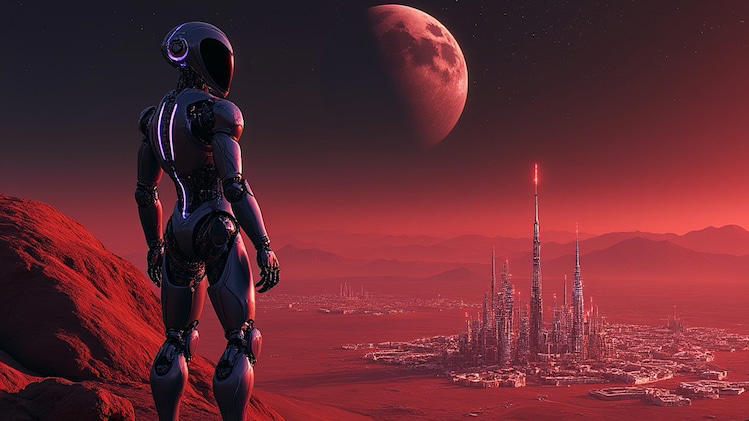SpaceX’s vision of colonizing Mars has inspired countless space enthusiasts. But before humans can live there long-term, advanced groundwork needs to be set. Enter Tesla’s Optimus, a humanoid robot that could play a vital role in preparing Mars for human settlers. Here’s how these robots could become the Red Planet’s first “inhabitants,” laying the foundation for human arrival.
The First Martian Workforce
Imagine a fleet of Tesla Optimus robots landing on Mars, designed to withstand its harsh environment. These robots could begin assembling basic structures, such as inflatable habitats or shelters built from Martian resources or Earth-supplied materials. By getting a head start, they would prepare a livable space for future human colonists.
Resource Utilization: Unlocking Martian Potential
A key mission for these robots would be In-Situ Resource Utilization (ISRU). Optimus robots could extract water from Mars’ ice reserves, convert it into rocket fuel, and produce oxygen for human settlers. They might also process Martian soil to create building materials, supporting the sustainability of a future colony.
Constructing and Maintaining Martian Settlements
Using advanced 3D printing or robotic construction techniques, Optimus robots could build permanent dwellings, potentially underground to protect against radiation. Their role would also involve regular maintenance, repairing any damage caused by dust storms or environmental hazards, ensuring the colony’s infrastructure remains safe.
Preparing for Human Arrival
Before humans step foot on Mars, these robots would conduct scientific experiments and engineering tests. From agricultural trials in Martian soil to setting up safe landing zones, they’d ensure life support systems, communication networks, and essential infrastructure are operational when humans arrive.
Human-Robot Collaboration
Once humans arrive, Optimus would become their assistants, taking on hazardous or time-consuming tasks to improve safety and efficiency. Whether handling dangerous materials or operating complex machinery, these robots would be vital in daily operations, making life easier and safer for settlers.
Evolution and Expansion
As the colony expands, Optimus robots would adapt, helping construct new habitats and tackle unforeseen challenges. With technological upgrades, they could evolve into more specialized units, tailored to meet the growing demands of Martian life.
Overcoming Challenges on Mars
- Energy: The robots would rely on solar power, but nuclear energy might be necessary for continuous operation in Mars’ low-light conditions.
- Durability: Optimus must be built to endure the extreme Martian environment, ensuring longevity in harsh conditions.
- AI and Autonomy: Due to the communication delay between Earth and Mars, these robots would need to operate autonomously, leading to advancements in artificial intelligence.
- Ethical Questions: The use of autonomous robots on another planet brings up ethical concerns around AI control, safety, and the role of robots in shaping a new world.
Tesla’s Optimus could be the pioneers of Mars, not just as tools, but as the building blocks of a robotic civilization. By establishing a Martian frontier, these robots would pave the way for humanity’s future in space, forming a symbiotic relationship between humans and machines that might unlock the mysteries of Mars and beyond.

